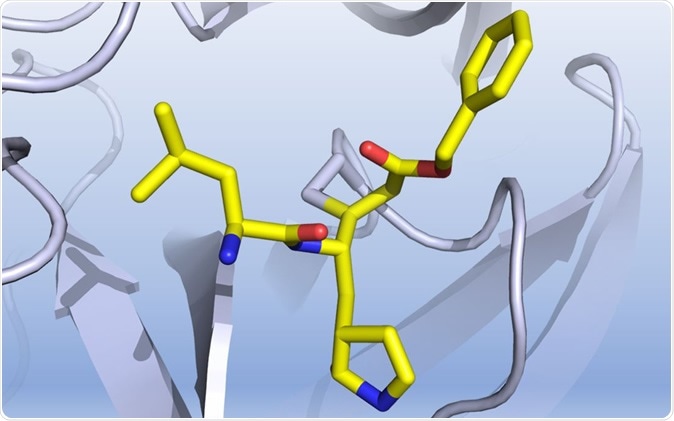As scientists across the world race to find a pharmacological cure for coronavirus disease (COVID-19), an international research group has analyzed more than 10 thousand different compounds and identified six potential candidates, publishing their results in the leading scientific journal Nature.
As of April 12, 2020, a novel coronavirus SARS-CoV-2 has infected more than 1.84 million people in 185 countries and territories and killed almost 113,000. Governments worldwide have locked down their cities, halted flights, and ordered people to stay home.
One of the reasons for such stringent measures is that there is still no vaccine for SARS-CoV-2 infection or medical cure for patients with COVID-19; consequently, pharmacological therapy approved for other diseases and infections are being tried experimentally in many ill individuals.
But the World Health Organization (WHO) cautions against administering or recommending these unproven treatment regiments to patients with COVID-19 and advises infected people against self-medication attempts.
This is the reason why an improved approach to test a myriad of existing drugs and to investigate new compounds is welcomed, and already implemented by some of the world's top-tier drug makers.
Combined screening approach against viral main protease
In a recent study published in the world's leading scientific journal Nature, researchers from China, the United States, and Australia joined forces in the quest to find a potential cure for COVID-19.
By initiating a program based on combined structure-assisted drug design, high-throughput screening, and virtual drug screening, they tested the efficacy of known drugs and novel compounds against SARS-CoV-2 main protease (Mpro) – an enzyme crucial for mediating viral replication and survival.

A graphic representation of how a discovered compound inhibits the COVID-19 virus main protease. Credit: Professor Luke Guddat.
"This makes it an attractive drug target for this virus, and as people don't naturally have this enzyme, compounds that target it are likely to have low toxicity", explains study co-author Professor Dr. Luke Guddat from the University of Queensland School of Chemistry and Molecular Biosciences in Brisbane, Australia.
Molecular fishing expedition
After appraising more than ten thousand potential drugs, researchers singled out six candidates that appear to efficiently inhibit Mpro enzyme. Among them, one was of particular interest – and the approach was not merely the use of theory and bioinformatics.
"We add the drugs directly to the enzyme or to cell cultures growing the virus and assess how much of each compound is required to stop the enzyme from working or to kill the virus," Dr. Guddat clarifies their methodological approach. "If the amount is small, then we have a promising compound for further studies."
Drugs that were already subjected to clinical trials for various chronic disorders, as well as compounds along the pipeline towards drug discovery, were favored, as the process to the final product would be much quicker in comparison to entirely new drug leads.
However, any compound with the potential of becoming a cure is taken seriously. "With continued and up-scaled efforts, we are optimistic that new candidates can enter the COVID-19 drug discovery pipeline in the near future", adds Dr. Guddat.
Rapid discovery of drug leads
"The convergence of structure-based ab initio drug design, virtual screening, and high-throughput screening proved to be an efficient strategy to find antiviral leads against COVID-19", study researchers explain in the Nature publication.
Their approach can be considered as a well-designed and scientifically proven shortcut, which is a ray of hope in these challenging times – especially when we know that conventional approaches to developing drugs typically take years of research and billions of investments.
"Our results demonstrate the efficacy of this screening strategy, which can lead to the rapid discovery of drug leads with clinical potential in response to new infectious diseases for which no specific drugs or vaccines are available", conclude the study authors forming a prominent international collaboration led by scientists at ShanghaiTech University.
Sources:
Journal reference: